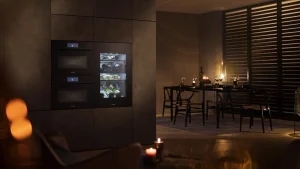
Think a garden sleeps when the sun goes down? Think again. While the daytime bees are tucked in, a whole different cast of characters takes the stage. Moths, bats, fireflies, and night-flying bees are the unsung heroes of pollination, working the night shift to keep our ecosystems thriving.
And here’s the deal: in our brightly lit, paved-over cities, these creatures are losing their way. A night-blooming pollinator garden isn’t just a beautiful, fragrant escape for you—it’s a critical pit stop for urban wildlife. It’s a moonlit sanctuary. Let’s dive into how you can create one.
Why Go Nocturnal? The Magic of the Moonlit Garden
Sure, daytime gardens are lovely. But a garden that comes alive at night? That’s pure magic. It engages senses you didn’t know your garden could touch. The air fills with intoxicating perfumes—heavier, sweeter scents designed to travel far in the still night air. Flowers glow in shades of white, cream, and pale yellow, acting like landing lights for their nighttime visitors.
Honestly, it’s also a brilliant solution for the busy urbanite. You’re at work all day, maybe stuck in an office. Coming home to a garden that’s just hitting its peak is… well, it’s a unique kind of therapy. It turns your balcony, patio, or tiny backyard into a multi-sensory evening retreat.
Meet the Night Shift: Your Garden’s After-Hours Staff
Who exactly are you planting for? Get to know your clientele.
The Understated Moth
Forget the drab, clothes-eating stereotype. We’re talking about hundreds of species of delicate, often colorful moths. They are the primary pollinators of the night, with a fantastic sense of smell. They’re drawn to tubular flowers that match their long, straw-like tongues (proboscises).
The Misunderstood Bat
Especially in the Southwest and warmer climates, bats like the lesser long-nosed bat are crucial pollinators for agaves and saguaro cacti. They go for large, pale flowers that are open at night. Supporting bats is a huge win for urban biodiversity.
The Firefly (Lightning Bug)
Seeing fewer fireflies these days? You’re not alone. They need dark, undisturbed areas to communicate with their flashes. A night garden with tall grasses and dense foliage provides them with a safe haven during the day—a place to hide from predators.
Crafting Your Moonlit Sanctuary: A Step-by-Step Guide
1. Location and the Power of Darkness
First things first: find a spot away from harsh security lights or bright windows. True darkness, or at least very soft, ambient light, is your goal. This might mean strategically placing a trellis or using a large shrub as a light barrier. You want to create a cozy, shadowy nook.
2. Selecting Your Star Plants
The key is fragrance and light-colored blooms. Here are some powerhouse plants for your nocturnal pollinator garden:
- Moonflower (Ipomoea alba): The quintessential night-bloomer. Its huge, white, trumpet-shaped flowers unfurl at dusk with a lemony scent. It’s a fast-growing annual vine that’s simply stunning.
- Evening Primrose (Oenothera): A tough, drought-tolerant perennial. Its yellow, pink, or white flowers open in the evening and are a moth magnet. You can almost watch them pop open—it’s that quick.
- Nicotiana (Flowering Tobacco): Don’t let the name fool you. Many varieties, especially the heirloom types, release a powerful, sweet fragrance at night. Their star-shaped flowers stand on tall stalks.
- Night Phlox (Zaluzianskya capensis): This one’s a showstopper. Tiny flowers that smell like honey and vanilla. Honestly, it’s a scent you won’t forget.
- Angel’s Trumpet (Brugmansia): For larger spaces, this shrub produces enormous, hanging trumpets that smell divine at night. A word of caution: it’s toxic if ingested, so plant with care around pets and kids.
3. Think Beyond Blooms: The Support System
A successful urban wildlife garden at night needs more than just flowers. It’s about creating an entire habitat.
- Leave the Leaves: A small, tidy pile of leaves in a corner provides an overwintering home for moth caterpillars and firefly larvae.
- Add a Water Source: A shallow dish with pebbles and water gives all wildlife—bees, birds, and moths—a place to drink. It’s a simple but critical resource.
- Host Plants are Key: To have moths, you need to feed their babies (caterpillars). Planting native grasses, oak trees, or other native host plants ensures the lifecycle continues right in your garden.
A Sample Planting Plan for a Container Garden
Short on space? No problem. You can create a potent little moon garden on a balcony with a large container. Here’s a simple, effective combo:
| Plant | Role in the Container | Key Feature |
| Moonflower Vine | Thriller (height & drama) | Large, fragrant white trumpets |
| Night Scented Stock | Filler (bulk & scent) | Clusters of tiny, intensely sweet flowers |
| Creeping Jenny | Spiller (trails over edge) | Chartreuse foliage that glows in moonlight |
The Ripple Effect: Why Your Small Garden Matters
It’s easy to feel like one small container or patch of earth can’t make a difference. But in a city, these pockets of habitat are like stepping stones. They create corridors for wildlife to travel, find food, and reproduce. Your garden connects with your neighbor’s, and theirs with the next.
You’re not just growing flowers. You’re rebuilding a fragmented ecosystem, one fragrant blossom at a time. You’re fighting light pollution by creating a dark refuge. You are, in your own way, bringing back the fireflies.
So as the city hums and the stars (or at least the city lights) begin to appear, your garden will start its real work. It becomes a living testament to the quiet, persistent life that carries on without our notice. A secret world, right outside your door, waiting to be discovered in the dark.








